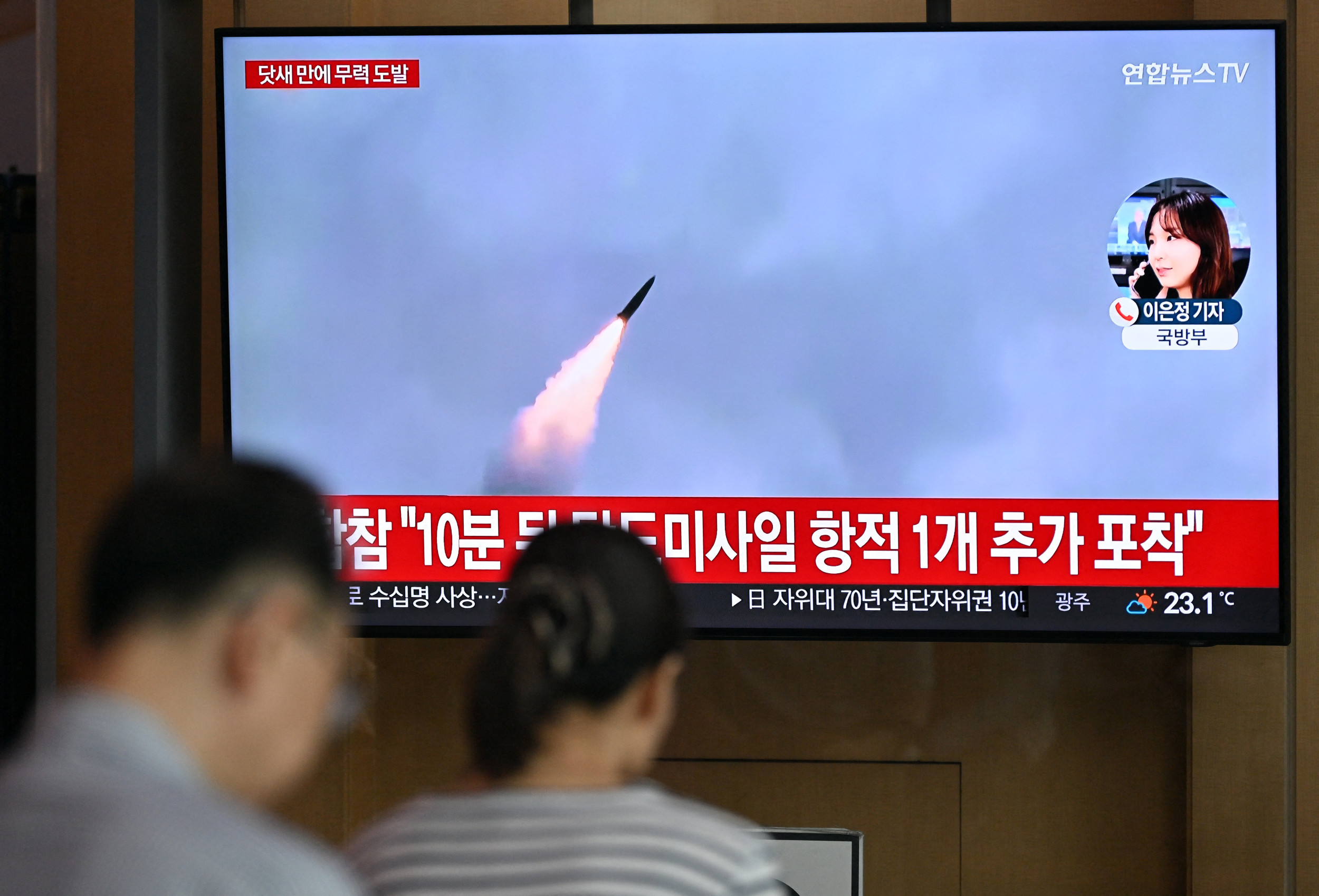Uncommon Knowledge
Newsweek is committed to challenging conventional wisdom and finding connections in the search for common ground.

An abortive North Korean missile fired on Monday may have endangered the nation’s capital after the South’s military said one of the rockets fell short of its intended target.
The Joint Chiefs of Staff in Seoul said it detected two short-range ballistic missiles fired 10 minutes apart—at 5:05 and 5:15 a.m. local time—from the Jangyon area in North Korea‘s southwestern province of South Hwanghae. The North Korean Embassy in Beijing did not immediately return a written request for comment.
The launch event was a possible show of force toward South Korea following its recent war games alongside the United States and Japan. Kim Jong Un‘s government says similar U.S.-led exercises near the Korean Peninsula threaten his country’s survival.
South Korea said the first missile flew 370 miles before splashing down in the sea off the North’s northeastern city of Chongjin, about 65 miles southwest of its triple border area with Russia and China. But the second missile—also headed northeast—traveled only 75 miles.
It was highly likely that the projectile landed near Pyongyang, South Korea’s Yonhap News Agency said. The North’s capital is about 65 miles northeast of Jangyon.
“It is difficult to know exactly where the short-range missile hit. We believe it may have gone toward Pyongyang,” the agency quoted a South Korean military official as saying.
Lee Sung Joon, a spokesperson for South Korea‘s Joint Chiefs of Staff, later told a press briefing that an analysis of the second launch was underway.
North Korea and its state news outlets have yet to acknowledge the test-fire, but the isolated regime may have been attempting to repeat a precision strike demonstration it conducted some 15 months ago, according to early assessments by the South.
Seoul believes North Korean forces fired two KN-23s, a type of solid-fueled tactical ballistic missile known officially as the Hwasong-11.
In mid-March last year, North Korea fired two KN-23 missiles from the same area. They traveled about 370 miles before striking a target island in the sea off Chongjin.
South Korea, Japan and the U.S. have shared real-time missile-tracking data with one another since December.
Last week, North Korea said it fired its first multi-warhead ballistic missile, but the South said the test ended in failure.
The U.S. Indo-Pacific Command condemned North Korea’s “unlawful and destabilizing acts” but said the test-fire “does not pose an immediate threat to U.S. personnel, or territory, or to our allies.”
Pyongyang’s second launch event in five days came shortly after the U.S. and its two East Asian allies concluded their three-day Freedom Edge exercise on Saturday, itself a collective show of force against Kim’s repeated missile tests.
In a lengthy statement on Sunday, North Korea’s Foreign Ministry said it denounced the drills “for their repeated reckless and provocative military muscle-flexing.” It warned of “fatal consequences,” without elaborating.
Newsweek is committed to challenging conventional wisdom and finding connections in the search for common ground.
Newsweek is committed to challenging conventional wisdom and finding connections in the search for common ground.